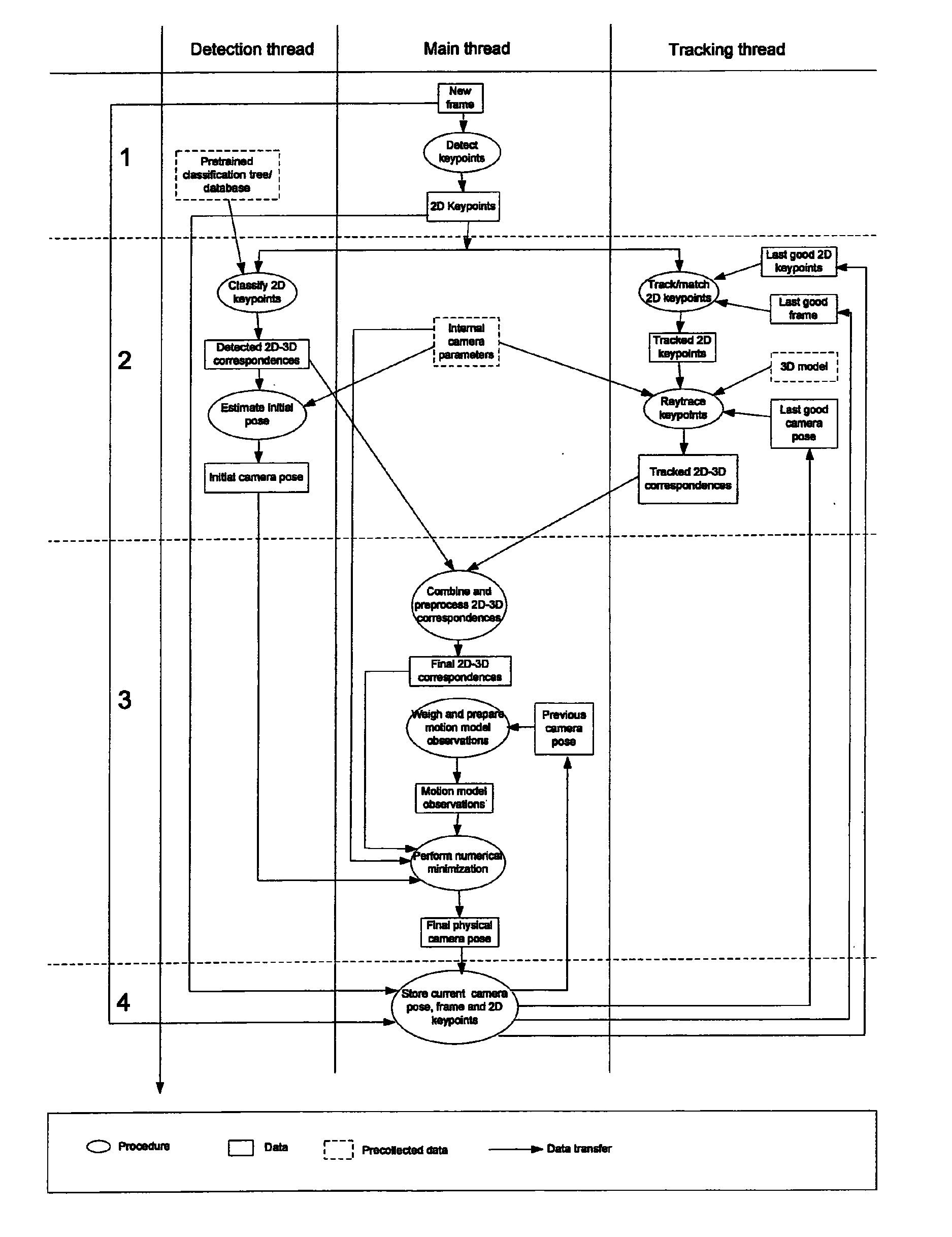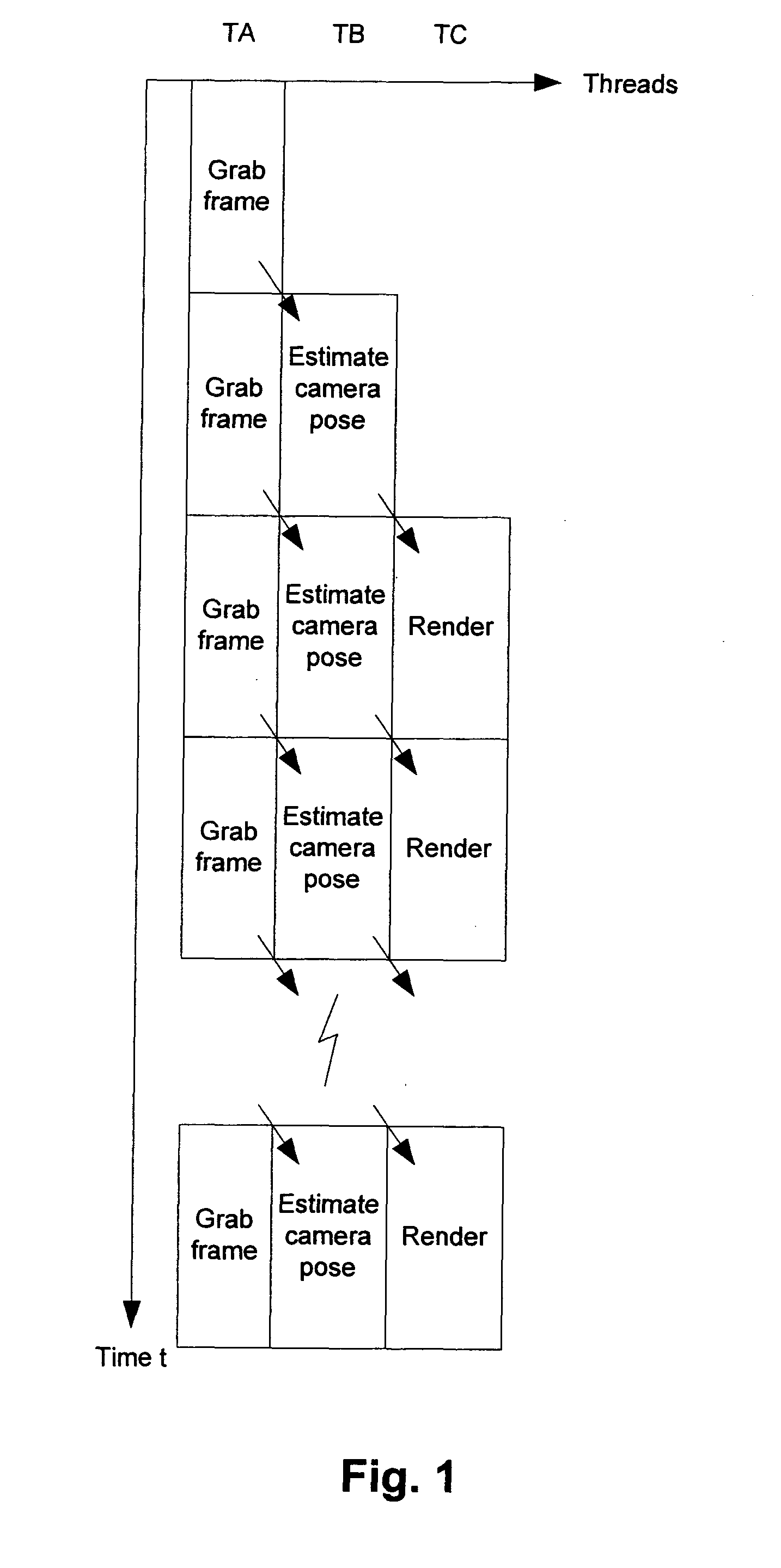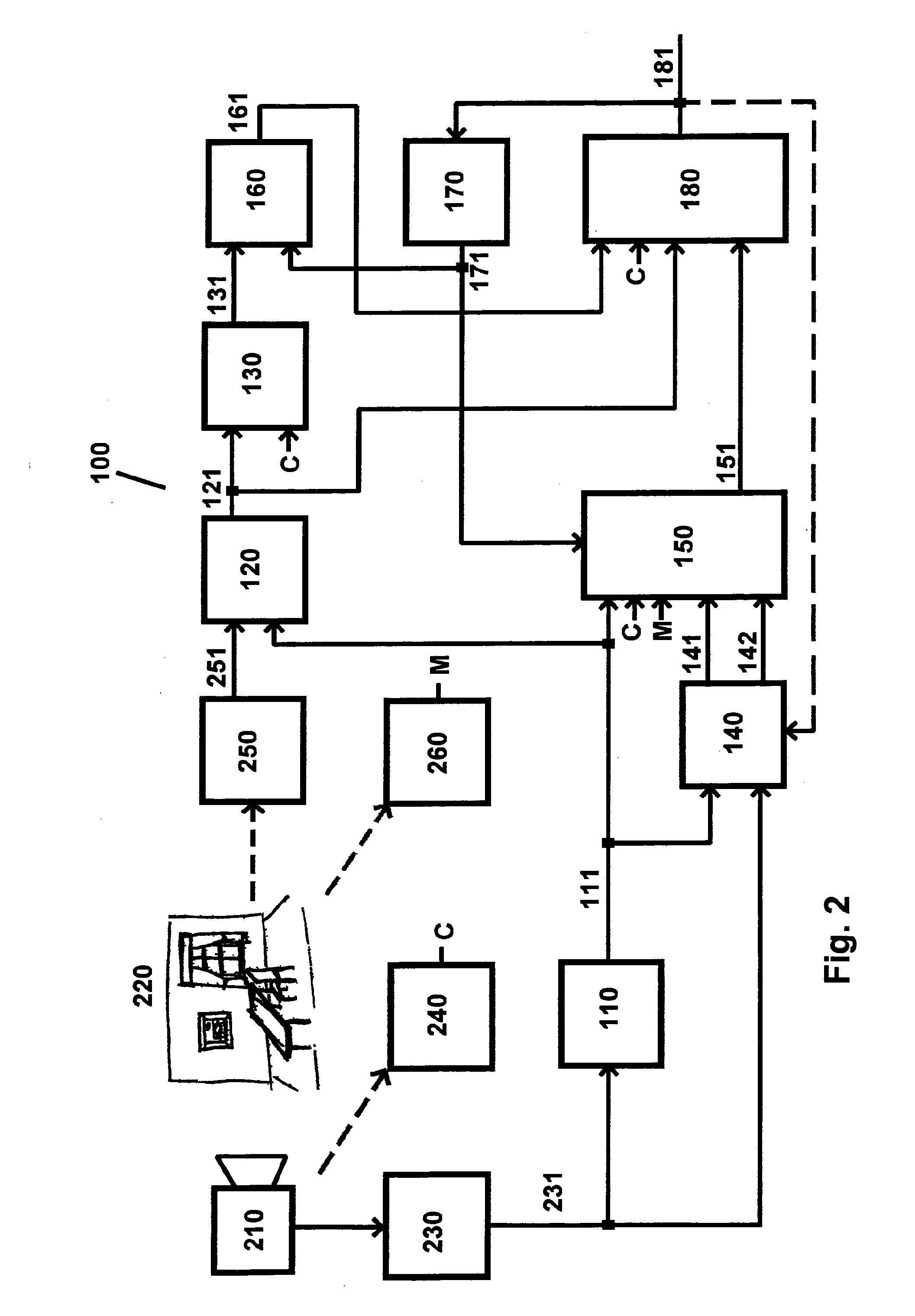Camera pose estimation apparatus and method for augmented reality imaging
a technology of augmented reality and estimation apparatus, applied in the field of imaging, can solve problems such as and achieve the effect of unrivalled speed and performan
- Summary
- Abstract
- Description
- Claims
- Application Information
AI Technical Summary
Benefits of technology
Problems solved by technology
Method used
Image
Examples
Embodiment Construction
3.1 System Overview
[0035]FIG. 6 illustrates a standard computer with a dual-core Central Processing Unit (CPU), Random Access Memory (RAM), Graphics Card, Hard Drive (HDD) mounted to the motherboard, which is adapted for implementation of the present invention. Further, there is Data interface that connects the camera to the computer. The camera has a lens for capturing images of the real environment, such as a scene of interest. The images are digitized on a sensor, typically a CCD or a CMOS sensor. Images are typically pre-stored in the camera's internal memory and then transferred to the computer through connection A, interpreted by the Camera interface, which again communicates the images to the motherboard into a purposely allocated area in the system RAM.
[0036]The CPU can typically be an Intel Core 2 Duo. Our system can also use a single-core CPU, but then performance will be lower. The RAM can typically be standard 512MB DDR2 SDRAM. The Hard Drive can typically be a standard ...
PUM
 Login to View More
Login to View More Abstract
Description
Claims
Application Information
 Login to View More
Login to View More - R&D
- Intellectual Property
- Life Sciences
- Materials
- Tech Scout
- Unparalleled Data Quality
- Higher Quality Content
- 60% Fewer Hallucinations
Browse by: Latest US Patents, China's latest patents, Technical Efficacy Thesaurus, Application Domain, Technology Topic, Popular Technical Reports.
© 2025 PatSnap. All rights reserved.Legal|Privacy policy|Modern Slavery Act Transparency Statement|Sitemap|About US| Contact US: help@patsnap.com



